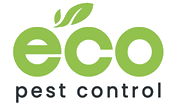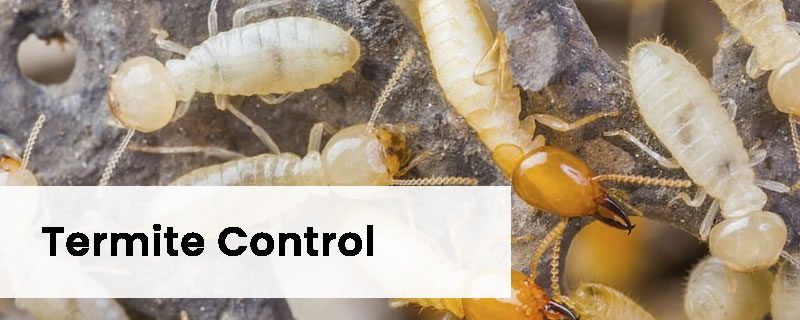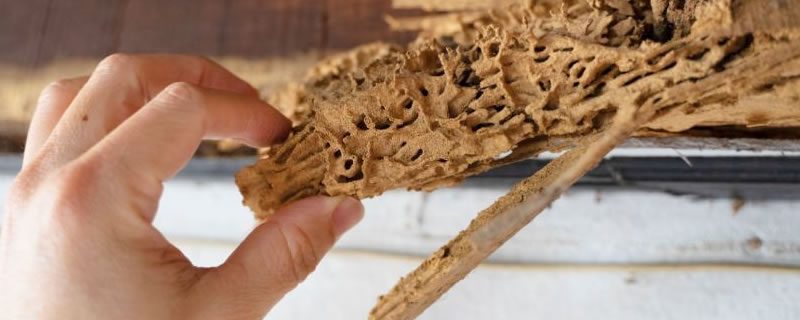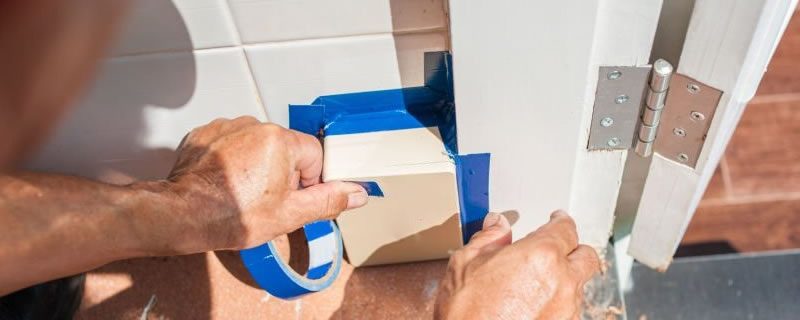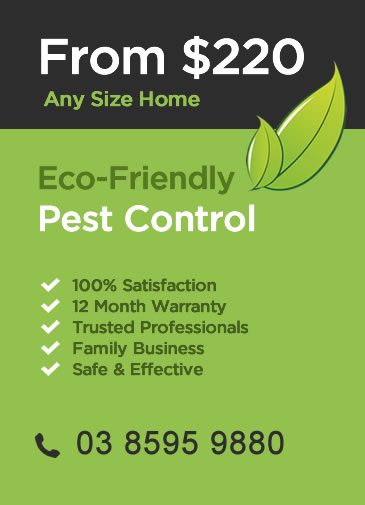Termite Treatment Melbourne
Affordable Termite Protection
Termites cause more damage to Australian homes than fires, storms, and floods combined. If you suspect an infestation or want to protect your Melbourne property, professional termite treatment is essential.
At Eco Pest Control Melbourne, we have over 10 years of experience providing effective termite treatments. We are fully licensed, insured, and guarantee 100% customer satisfaction with our services.
Phone now: 03 8595 9880
What is Termite Treatment?
Termite treatment involves applying specialised insecticides in areas where termites and white ants are active or may enter your home. The two main types are:
- Soil Treatments: Trenching and treating soil with Termidor or drilling and injecting concrete slabs. This creates a protective chemical barrier to prevent subterranean termites from entering the structure through cracks in foundations.
- Wood Treatments: Eliminating active colonies inside infested wood with targeted spraying of Biflex, Eliminator or Bora-Care. Treating surrounding wood helps prevent future termite attack.
Professional termite control protects your property from expensive damage. The cost is minor compared to repairing or replacing floors, walls and roofing damaged by termite infestations left unchecked.
Types of Termite Treatments
There are several treatment options we use for both preventing and eliminating termite infestation depending on the level of activity, location of colonies and building construction:
Soil Treatments
- Trench and Treat Soil – Trenching around foundations and treating backfill with a termiticide like Termidor or Premise forms an underground chemical barrier. Best for preventing entry from termites tunneling from nearby soil.
- Concrete Slab Injection – Drilling through slabs and injecting termiticides creates a protective barrier preventing termites tunneling underneath. Used when structures have suspended concrete slab floors.
Wood Treatments
- Eliminating Active Colonies – We use targeted spraying of Termidor Foam, Biflex Aquamax or Eliminator dusts to kill active colonies inside infested wood. High penetration ensures destructive pests hiding deep inside are eliminated.
- Preventative Wood Treatment – Surface spraying vulnerable wood with Bora-Care or injecting Bora-Care and X-ject into walls creates a long lasting protective barrier against future termite attack even after finishing materials are installed.
Termite Baiting Systems
- Bait Stations – Installing stations around the property containing termite bait lets us monitor activity and eliminates colonies by spreading bait back through the tunnels to the nest when feeding is detected.
How Termites Cause Structural Damage
There are over 360 termite species in Australia but subterranean termites cause the most building damage. Colonies containing over 2 million termites tunnel through soil to enter homes through vulnerable cracks in foundations. Worker termites chew through wood destroying walls, floors and roof timbers.
Developing termite colonies have a queen continuously laying eggs, protected by soldiers defending the nest. Workers forage for cellulose food bringing it back to feed the growing colony. If uncontrolled, huge numbers can severely compromise structural integrity. Stopping them requires eliminating active colonies and preventing new attacks.
Are Pesticides Used Against Termites Safe?
Many termiticides and wood treatments contain toxic chemicals so care is needed:
- Read product labels carefully and only use as directed.
- Prevent exposure through skin contact or breathing in fumes during application. Wear PPE.
- Stop pets and children accessing treated areas until completely dry.
- Contact professionals if concerned about health risks from DIY application.
Our licensed technicians take precautions using personal protective equipment and advise when areas are safe for people to re-enter after treatment. We only use termiticides approved for use in Australia applied strictly in accordance with product guidelines and regulations.
Termite Barrier Sprays
Applied as a continuous chemical barrier around and under foundations and vulnerable timber structures, quality sprays prevent termite entry and attack.
Why Barrier Spraying is an Effective Treatment Method
Reliability – When applied correctly, termiticides create long-lasting barriers preventing termites from tunneling underneath or entering wood. Used alone or in combination with other treatments.
Affordability – Less expensive than some alternate treatments with the liquid barrier lasting for several years depending on product and application rate used.
High Penetration – Liquid sprays actively soak deep into surrounding soil and wood, ensuring any termites that encounter these treated areas are eliminated rather than just repelled.
Flexible Applications – Barrier sprays can be used to treat soil, timber and a wide variety of vulnerable materials wherever termite activity threatens building integrity.
Liquids Used for Termite Treatments
There are several termiticide actives used for professional soil, wood and termite bait treatments:
- Permethrin – Broad spectrum pyrethroid insecticide, low toxicity with quick knockdown of insects. Often used for pre-construction treatments.
- Bifenthrin – Pyrethroid insecticide providing up to 8 years protection as an effective barrier treatment for a range of pests including termites.
- Fipronil – Slow acting non repellent. Toxic to insects attacking treated areas but safe for pets when dry. Used for both barrier and as an active ingredient in termite baits.
- Chlorantraniliprole – Advanced mode of action insecticide. Low toxicity to mammals. Often used as an active ingredient in termite bait products.
- Imidacloprid – Long lasting insecticide effective on termites and other urban pests. Low toxicity and ideal for use in and around structures when applied correctly.
Signs of Termite Infestation
Telltale signs requiring further investigation include:
- Underground shelter tubes extending from soil to wood.
- Mud tunnels over foundation walls, piers, trees.
- Piles of termite droppings and discarded wings around openings.
- Sagging floors, doors or windows not closing properly.
- External walls, skirting boards or door frames with blistered or cracked paint.
- Discolored patches or bubbles under carpet along walls.
- Hollow sounding tapping on walls, flooring or plasterboard.
- Flying termites or alates
We thoroughly inspect interior and exterior areas looking for these and other signs of activity. Modern tools like moisture meters and thermal imaging help detect hidden entry points difficult to find visually.
Our Termite Control Services in Victoria
- Comprehensive Termite Inspections
- Professional Soil Treatments
- Targeted Wood Treatments
- Advanced Baiting Systems
- Thermal Camera Inspections
- Tailored Termite Protection Plans
- New Building Treatments
- Expert Crews & Latest Technology
FAQs
What process do termites use to damage structures?
Termites follow a systematic process of tunneling through soil or wood to enter houses. Worker termites then carry cellulose back to feed growing nymphs and larvae in the nest. As the colony expands to hundreds of thousands, substantial termite damage to structural timbers occurs if uncontrolled.
What information should homeowners know about termite nest locations?
Termite nests can exist away from the structures they infest. Subterranean termites often have underground central nests with satellite nests inside or under infested houses. Drywood termites nest totally within infested wood. Identifying all nest areas is key for effective treatment.
Should termite experts inspect the entire property area around a house?
Yes. Termites can travel distances from ground nests through tunnels to structures. A regular termite inspection should cover the house and commercial properties for activity signs and to locate nests. We recommend treating isolation zones between nests and buildings.
What indicates the presence of termites?
Interior warnings include mud tubes on foundations, blistered paint, sagging floors and walls and frass around openings. Tap testing for hollow sounds can reveal activity. Exterior signs are mud tunnels on concrete, discarded wings and droppings around infestations.
What questions should be asked of termite inspection companies?
Key questions cover what activity signs were found, infestation extent, impacted areas, treatment methods recommended, warranties, required retreatments, exclusions, total costs, treatment duration and availability of preventive post-construction applications. Receive one detailed inspection report.
How does moisture and debris in the local environment influence termite infestations?
Warm, humid environments surrounded by wood sources encourage termite colonies. Houses near favorable conditions are more prone to attack. Management of moisture and cellulose through landscaping, ventilation and weep holes helps discourage termite presence. Early collaboration with pest managers on environment modifications and barriers is recommended.
Why Choose Us?
- Over 10 Years Experience
- Licensed, Insured & EcoCert Accredited
- Termite Specialists
- Workmanship Warranty
- Scheduled Retreatments
- Detailed Termite Reports
- Structural Engineers Consult
- Major Pest Brand Accreditation
We service all suburbs across Melbourne from our branches located in:
- East Melbourne
- South Melbourne
- Western Melbourne
- Northern Melbourne
Contact Us
To book your regular inspection or discuss our termite treatment services further please contact us today on 03 8595 9880. Our friendly team is always happy to help.
